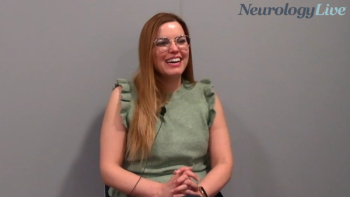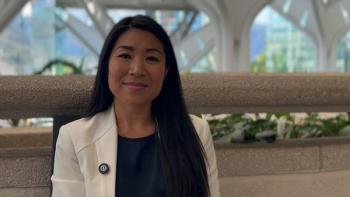
Lifestyle Change for Migraine Management: Practical Tips for the Neurologist and PCP, Part 2
Trigger avoidance-only strategies don’t actually help migraine patients improve. These are the proactive behaviors that do.
For Part 1 of this series,
Lifestyle is crucial to migraine management. Significant research1-10 demonstrates that engaging in certain consistent, healthy behaviors reduces migraine severity and attack frequency. In November 2020, the American Academy of Neurology updated its Headache Quality Measurement Set to reflect those findings,11 with a directive that providers should now counsel migraine patients on behavior modification at each visit.
However, less well known among neurologists and primary care providers is how to counsel migraine patients on behavior modification. Not long ago, belief was that lifestyle changes for migraine revolved around negative strategies such as avoiding triggers and lowering activity levels. It has since emerged that taking a proactive, multimodal approach to positive lifestyle changes is more effective.
As headache specialists for over 30 years, we have seen that proactive lifestyle changes are a powerful complement to pharmaceutical approaches. But initiating and implementing lifestyle changes is also challenging for patients with migraine, who need education, guidance, and support. Here, we present Part 2 of our overview of the lifestyle interventions shown most helpful for migraine, as well as specific strategies to recommend to patients with both episodic and chronic migraine.
The
- Exercise/Movement
- Mindfulness/Stress Management
- Psychological Health
Exercise/Movement
Research shows that moderate, aerobic exercise 3 times per week at 30 minutes per session reduces the pain, intensity, frequency, and duration of future migraine attacks.12,13 Exercise may be as effective for migraine as the medications amitriptyline and topiramate.14
However, movement can be a frightening topic for patients with migraine. Up to 78% of people with migraine avoid exercise,15,16 either because they feel it has triggered an attack or due to limited energy; but lack of movement actually results in worsening migraine.
Pacing and consistency are essential components for exercise with migraine. We emphasize that each person has their own exercise “FITT”: frequency, intensity, time, and type. For some, that may be the ideal of 3 30-minute aerobic sessions per week. For others, it may be a twice-weekly stretching session of 5 minutes. Truly, the best exercise routine for each patient is whatever they can sustain on a consistent basis.
Patient Counseling Tips:
- Start by anchoring a movement routine to everyday activities, such as taking a walk after dinner, doing yoga upon waking, or adding a little more movement into their everyday household chores like vacuuming.
- We advise a 10-minute rest period for every 5- to 10-minute exercise period until the patient learns to gauge their own overexertion signals.
A patient handout on movement for migraine is available here from Ctrl M Health.
Mindfulness/Stress Management
Eighty percent of people with migraine report stress as a migraine trigger;17 stress can also make attacks worse and harder to treat. Migraine itself can be a powerful stressor: As a painful condition, it inevitably influences processes of the mind, usually in negative ways, which exacerbates pain. However, the mind can also learn to positively modulate the experience of pain to reduce suffering.
Self-awareness practices like mindfulness, meditation, relaxation, and emotion regulation help train the brain to be less reactive to stressful thoughts, feelings, and situations in ways that positively modulate the experience of pain and reduce suffering.18-30 By strengthening vagal tone, patients can train their bodies to more flexibly shift between the stress response and the parasympathetic response as needed. It is also anti-inflammatory.
Regular meditation reduces the intensity and frequency of headache, as well as the psychological distress that inevitably comes with headache and migraine.26,31-38 Twenty minutes per day are recommended, but even 2 minutes of mindfulness practice per day are beneficial.
Patient Counseling Tips:
- Encourage 1 minute of focused breathing.
- Ask the patient to set a timer for 1 minute, then breathe a little more slowly and deeply, paying full attention to the flow of breath.
- When thoughts appear in the mind, they should notice the thought, then turn the attention back to the breath.
- Repeat until the timer sounds.
A patient handout on stress management for migraine is available here from Ctrl M Health.
Psychological Health
Migraine is highly comorbid with mental health disorders and the relationship is bidirectional.18,19,21,27,30,39,40 More than 50% of migraine patients have anxiety, depression, or both, the presence of which make migraine worse and harder to treat.41-43 In addition, migraine is a stressful, lonely, and isolating condition. Patients require good emotional coping skills and self-awareness to manage difficult feelings and improve their quality of life. Such skills also markedly reduce headache frequency and intensity: Studies show that talk therapy can reduce headaches by 20%to 67%.44
The psychological components that help improve migraine include:
Acceptance. The ability to accept migraine pain, and not fight or deny it, enables a patient to reduce their level of suffering. It frees them to focus their energies on the things they can control, thus emphasizing their wellness and reinforcing their identities as much more than a person with a neurological disorder.24,45
Connectedness. Connecting to the people, work, or activities that bring joy, support, and meaning leads to neurochemical shifts that mimic medications for mood and migraine, including training the vagus nerve to initiate the relaxation response and the release of oxytocin, which is an inhibitor of calcitonin gene-related peptide (CGRP).46-52
Self-efficacy. By building confidence in their ability to achieve specific goals, patients can overcome the learned helplessness that can result from living with migraine, which may otherwise inhibit them from making the changes necessary for their health goals.20,53-66
Growth mindset. Decades of research have shown that a fixed pain mindset—rumination about pain, helplessness, and an expectation that pain will only get worse—is associated with higher pain intensity and disability from pain, and reduced success of multimodal treatment approaches. Developing a growth mindset by reframing unhelpful thoughts and celebrating successes can reduce suffering as a consequence of migraine, and sometimes even downregulate the pain response itself.67-75
Patient Counseling Tips:
- Ask them to incorporate 1 form of connectedness per day, ie, engaging with friends, family, work, an interest, a hobby, a pet. Inquire about the things that would bring them a sense of satisfaction.
A patient handout on connectedness for migraine is available here from Ctrl M Health.
Lifestyle changes are a valuable complement to medical approaches to managing migraine. The sheer number and variety of options for behavioral changes and psychological wellness assures an entry point for every patient.
However, current evidence-based, expert-reviewed programs are rare. That is a guiding reason why we at the Jefferson Headache Center and Thomas Jefferson University have partnered with Ctrl M Health, whose app-delivered program makes this information widely accessible. We have created a world-respected advisory panel to help in this important endeavor.
Spreading the word about the essential role of lifestyle change is a significant step toward helping the estimated 40 million Americans with migraine. Importantly, behavioral modifications are factors within a patient’s control, giving them tools they can use every day to help them improve.
For part 1 of the “Lifestyle Changes for Migraine” series, addressing sleep, nutrition, and hydration,
The Jefferson Headache Center and Thomas Jefferson University have partnered with Ctrl M Health to create comprehensive, evidence-based programming and support for people with migraine. For free provider resources, best practice tips, and patient handouts,
REFERENCES
1. Buse DC, Greisman JK, Baigi K, Lipton RB. Migraine progression: a systematic review. Headache. 2019; 59(3):306-338.doi:10.1111/head.13459
2. Wober C, Wober-Bingol C. Triggers of migraine and tension-type headache. Handb Clin Neurol. 2010;97:161-72. doi:10.1016/S0072-9752(10)97012-7
3. Silberstein SD. Practice parameter: Evidence-based guidelines for migraine headache (an evidence-based review): Report of the quality standards subcommittee of the American Academy of Neurology. Neurology. 2000;55(6):754-62. doi:10.1212/wnl.55.6.754
4. Zhang Y, Dennis JA, Leach MJ, et al. Complementary and Alternative Medicine Use Among US Adults With Headache or Migraine: Results from the 2012 National Health Interview Survey. Headache. 2017;57(8):1228-1242. doi:10.1111/head.13148
5. Wells RE, Bertisch SM, Buettner C, Phillips RS, McCarthy EP. Complementary and alternative medicine use among adults with migraines/severe headaches. Headache. 2011;51(7):1087-1097. doi:10.1111/j.1526-4610.2011.01917.x
6. Penzien DB, Rains JC, Lipchik GL, Nicholson RA, Lake AE, Hursey KG. Future directions in behavioral headache research: Applications for an evolving health care environment. Headache. 2005;45(5):526–534. doi:10.1111/j.1526-4610.2005.05105.x
7. Park, SY, Chen, Y. Individual and Social Recognition: Challenges and Opportunities in Migraine Management. Presented at: 18th ACM Conference on Computer Supported Cooperative Work and Social Computing; March 14-18, 2015; Vancouver, BC, Canada. P1540.
8. Krause SJ, Stillman MJ, Tepper DE, Zajac D. A Prospective Cohort Study of Outpatient Interdisciplinary Rehabilitation of Chronic Headache Patients. Headache. 2017;57(3):428-440. doi:10.1111/head.13020
9. Lemstra M, Stewart B, Olszynski WP. Effectiveness of Multidisciplinary Intervention in the Treatment of Migraine: A Randomized Clinical Trial. Headache. 2002;42(9):845-854. doi:10.1046/j.1526-4610.2002.02202.x
10. Robblee J, Starling AJ. SEEDS for success: Lifestyle management in migraine. Cleve Clin J Med. 2019;86(11):741-749. doi:10.3949/ccjm.86a.19009
11. Robbins MS, Victorio MCC, Baily M, et al. Quality improvement in neurology: Headache Quality Measurement Set. Neurology. 2020;95(19):866-873. doi:10.1212/WNL.0000000000010634
12. Lemmens J, De Pauw J, Van Soom T, et al. The effect of aerobic exercise on the number of migraine days, duration and pain intensity in migraine: a systematic literature review and meta-analysis. J Headache Pain. 209;20(1):16. doi:10.1186/s10194-019-0961-8
13. La Touche R, Fernández Pérez JJ, Acosta AP, et al. Is aerobic exercise helpful in patients with migraine? A systematic review and meta-analysis. Scand J Med Sci Sports. 2020;30(6):965-982. doi:10.1111/sms.13625
14. Varkey E, Cider A, Carlsson J, Linde M. Exercise as migraine prophylaxis: a randomized study using relaxation and topiramate as controls. Cephalalgia. 2011;31(14):1428–1438. doi:10.1177/0333102411419681
15. Farris SG, Thomas JG, Abrantes AM, et al. Anxiety sensitivity and intentional avoidance of physical activity in women with probable migraine. Cephalalgia. 2019;39(11):1465-1469. doi:10.1177/033310241986171
16. Koppen H, van Veldhoven PLJ. Migraineurs with exercise-triggered attacks have a distinct migraine. J Headche Pain. 2013;14(1):99. doi:10.1186/1129-2377-14-99
17. Kelman L. The triggers or precipitants of the acute migraine attack. Cephalalgia. 2007;27(5):394-402. doi: 10.1111/j.1468-2982.2007.01303.x
18. Borsook D, Maleki N, Becerra L, McEwaen B. Understanding migraine through the lens of maladaptive stress responses: a model disease of allostatic load. Neuron. 2012;73(2):219-34. doi:10.1016/j.neuron.2012.01.001
19. Buse DC, Andrasik F. Behavioral medicine for migraine. Neurol Clin. 2009;27(2):445-465.doi:10.1016/j.ncl.2009.01.003
20.Cramer H, Hehlke M, Vasmer J, et al. Integrated care for migraine and chronic tension-type headaches: A prospective observational study. Complement Ther Clin Pract. 2019;36:1-6. doi:10.1016/j.ctcp.2019.04.001
21. Dikmen PY, Yavuz BG, Aydinlar EI. The relationships between migraine, depression, anxiety, stress, and sleep disturbances. Acta Neurol Belg. 2015;115(2):117-22. doi:10.1007/s13760-014-0312-0
22. D’Souza PJ, Lumley MA, Kraft CA, Dooley JA. Relaxation training and written emotional disclosure for tension or migraine headaches: a randomized, controlled trial. Ann Behav Med. 2008;36(1):21-32. doi:10.1007/s12160-008-9046-7
23. Feuille M, Pargament K. Pain, mindfulness, and spirituality: A randomized controlled trial comparing effects of mindfulness and relaxation on pain-related outcomes in migraineurs. J Health Psychol. 2015;20(8):1090-1106. doi:10.1177/1359105313508459
24. Grazzi L, Bernstein C, Raggi A, et al. ACT for migraine: effect of acceptance and commitment therapy (ACT) for high-frequency episodic migraine without aura: preliminary data of a phase-II, multicentric, randomized, open-label study. Neurol Sci. 2019;40(1):191-192.doi:10.1007/s10072-019-03802-w
25. Grazzi L, Sansone E, Raggi A, et al. Mindfulness and pharmacological prophylaxis after withdrawal from medication overuse in patients with Chronic Migraine: an effectiveness trial with a one-year follow-up. J Headache Pain. 2017;18(1):15. doi:10.1186/s10194-017-0728-z
26. Hilton L, Hempel S, Ewing BA, et al. Mindfulness Meditation for Chronic Pain: Systematic Review and Meta-analysis. Ann Behav Med. 2017;51(2):199-213. doi:10.1007/s12160-016-9844-2
27. Holroyd KA, Drew JB. Behavioral approaches to the treatment of migraine. Semin Neurol. 2006;26(2):199-207. doi:10.1055/s-2006-939920
28. Inan LE, Akturk T, Tanik N. Cognitive Behavioral Therapy Approach in cases with Migraine Disease. J Cogn Behav Psychot Res. 2020;9(1):67-72. doi:10.5455/JCBPR.40831
29. Mayhami K, Moradi O, Dadgar M, Ezatpour EE. Investigation of the educational effectiveness of cognitive-behavioral approach (CBT) coupled with relaxation on migraine pain. Shenakht J Psychol Psych. 2019;6(2):27-37. doi:10.29252/shenakht.6.2.27
30. Pérez-Muñoz A, Buse DC, Andrasik F. Behavioral interventions for migraine. Neurol Clin. 2019;37(4), 789-813. doi:10.1016/j.ncl.2019.07.003
31. Wells RE, Seng EK, Edwards RR, Victorson DE, et al. Mindfulness in migraine: A narrative review. Expert Rev Neurother. 2020;20(3):207-225. doi:10.1080/14737175.2020.1715212
32. Wells RE, Burch R, Paulsen RH, Wayne PM, Houle TT, Loder E. Meditation for migraines: a pilot randomized controlled trial. Headache. 2014;54(9):1484-95. doi:10.1111/head.12420
33. Wachholtz A, Vohra R, Metzger A. A reanalysis of a randomized trial on meditation for migraine headaches: Distraction is not enough but meditation takes time. Complement Ther Med. 2019;46:136-143. doi:10.1016/j.ctim.2019.08.011
34. Seng EK, Singer AB, Metts C, et al. Does Mindfulness‐Based Cognitive Therapy for Migraine Reduce Migraine‐Related Disability in People with Episodic and Chronic Migraine? A Phase 2b Pilot Randomized Clinical Trial. Headache. 2019;59(9):1448-1467. doi:10.1111/head.13657
35. Pressman A, Law H, Stahl R, et al. Conducting a pilot randomized controlled trial of community-based mindfulness-based stress reduction versus usual care for moderate-to-severe migraine: protocol for the Mindfulness and Migraine. Trials. 2019;20:257. doi:10.1186/s13063-019-3355-y
36. Kabat-Zinn J, Lipworth L, Burney R. The clinical use of mindfulness meditation for the self-regulation of chronic pain. J Behav Med. 1985;8(2):163-90. doi:10.1007/BF00845519
37. Bakhshani NM, Amirani A, Amirifard H, Shahrakipoor M. The Effectiveness of Mindfulness-Based Stress Reduction on Perceived Pain Intensity and Quality of Life in Patients With Chronic Headache. Glob J Health Sci. 2015;8(4):142-51.doi:10.5539/gjhs.v8n4p142
38. Bawa FLM, Mercer SW, Atherton RJ, et al. Does mindfulness improve outcomes in patients with chronic pain? Systematic review and meta-analysis. Br J Gen Pract . 2015;65(635):e387-400. doi:10.3399/bjgp15X685297
39. Maleki N, Becerra L, Borsook D. Migraine: maladaptive brain responses to stress. Headache. 2012;52(Suppl 2):102-106. doi:10.1111/j.1526-4610.2012.02241.x
40. Klenofsky B, Pace A, Natbony LR, Sheikh HU. Episodic migraine comorbidities: avoiding pitfalls and taking therapeutic opportunities. Curr Pain Headache Rep. 2019;23(1):1. doi:10.1007/s11916-019-0742-8
41. The Link Between Migraine, Depression and Anxiety. American Migraine Foundation. Published May 2, 2018. Accessed August 18, 2021. https://americanmigrainefoundation.org/resource-library/link-between-migraine-depression-anxiety/
42. Hamelsky SW, Lipton RB. Psychiatric comorbidity of migraine. Headache. 2006;46(9):1327-33. doi: 10.1111/j.1526-4610.2006.00576.x
43. Peres M, Mercante J, Tobo PR, Kamei H, Bigal ME. Anxiety and depression symptoms and migraine: a symptom-based approach research. J Head Pain. 2017;18(1):37. doi:10.1186/s10194-017-0742-1
44. Sullivan A, Cousins S, Ridsdale L. Psychological interventions for migraine: a systematic review. J Neurol. 2016;263(12):2369-2377. doi:10.1007/s00415-016-8126-z
45. Dindo LN, Recober A, Calarge CA, et al. One-Day Acceptance and Commitment Therapy Compared to Support for Depressed Migraine Patients: A Randomized Clinical Trial. Neurotherapeutics. 2020;17(2):743-753. doi:10.1007/s13311-019-00818-0
46. Hooker SA, Masters KS, Park CL. A meaningful life is a healthy life: a conceptual model linking meaning and meaning salience to health. Rev Gen Psychol. 2017;22(1):11-24. doi:10.1037/gpr0000115
47. House JS, Landis KR, Umberson D. Social relationships and health. Science.1988;241(4865):540-545. doi:10.1126/science.3399889
48. Kok BE, Fredrickson BL. Upward spirals of the heart: Autonomic flexibility, as indexed by vagal tone, reciprocally and prospectively predicts positive emotions and social connectedness. Biol Psychol. 2010;85(3):432-436. doi:10.1016/j.biopsycho.2010.09.005
49. Magnuson CD, Barnett LA. The playful advantage: How playfulness enhances coping with stress. Leisure Sciences. 2913;35(2):129-144.doi:10.1080/01490400.2013.761905
50. Martelletti P, Schwedt TJ, Lanteri-Minet M. et al. My Migraine Voice survey: a global study of disease burden among individuals with migraine for whom preventive treatments have failed. J Headache Pain. 2018;19(1):115. doi:10.1186/s10194-018-0946-z
51. McQuoid J. (2017). Finding joy in poor health: The leisure-scapes of chronic illness. Soc Sci Med. 2017;183:88-96. doi:10.1016/j.socscimed.2017.04.044
52. Tzabazis A, Kori S, Mechanic, J, et al. Oxytocin and Migraine Headache. Headache. 2017;57 Suppl 2:64-75. doi:10.1111/head.13082
53. Bandura A. Self-efficacy. In V. S. Ramachaudran (Ed.), Encyclopedia of human behavior (Vol. 4, pp. 71-81). New York: Academic Press; 1994. (Reprinted in H. Friedman [Ed.], Encyclopedia of mental health. San Diego: Academic Press, 1998).
54. Bandura A. An agentic perspective on positive psychology. In S. J. Lopez (Ed.), Positive psychology: Exploring the best in people, Vol. 1. Discovering human strengths (pp. 167–196). Praeger Publishers/Greenwood Publishing Group;2008.
55. Donisi V, Mazzi MA, Gandolfi M, et al. Exploring Emotional Distress, Psychological Traits and Attitudes in Patients with Chronic Migraine Undergoing OnabotulinumtoxinA Prophylaxis versus Withdrawal Treatment. Toxins. 2020;12(9):577. doi:10.3390/toxins12090577
56. Farley H. Promoting self-efficacy in patients with chronic disease beyond traditional education: A literature review. Nursing Open. 2019;7(1):30–41. doi:10.1002/nop2.382
57. O'Leary A. Self-efficacy and health. Behav Res Ther. 1985;23(4):437-51. doi:10.1016/0005-7967(85)90172-x.
58. O'Leary A. Self-efficacy and health: Behavioral and stress-physiological mediation. Cog Ther Res. 1992;16(2):229-245. doi:10.1007/BF01173490
59. Peters M, Potter CM, Kelly L, et al. Self-efficacy and health-related quality of life: a cross-sectional study of primary care patients with multi-morbidity. Health Qual Life Outcomes. 2019;17(1):37. doi:10.1186/s12955-019-1103-3
60. Holloway A, Watson HE. Role of self‐efficacy and behaviour change. Int J Nurs Pract. 2022;8(2):106-115. doi:10.1046/j.1440-172x.2002.00352.x
61. Seng EK, Holroyd KA. Dynamics of Changes in Self-Efficacy and Locus of Control Expectancies in the Behavioral and Drug Treatment of Severe Migraine. Ann Behav Med. 2010;40(3):235-47. doi:10.1007/s12160-010-9223-3
62. Short AL. Enhancing migraine self-efficacy and reducing disability through a self-management program. J Am Assoc Nurse Pract. 2019;33(1):20-28. doi:10.1097/JXX.0000000000000323
63. Short AL (2019). Impact of Self-Management on Disability and Self-Efficacy in Adults with Chronic Migraine (Doctoral dissertation, University of Missouri--Kansas City).
64. Strecher VJ, DeVellis BM, Becker MH, Rosenstock IM. The role of self-efficacy in achieving health behavior change. Health Educ Q. 1986;13(1):73-92. doi:10.1177/109019818601300108
65. Willis E. Patients’ self-efficacy within online health communities: facilitating chronic disease self-management behaviors through peer education. Health Commun. 2016;31(3):299-307. doi:10.1080/10410236.2014.950019
66. Woldeamanuel YW, Sanjanwala BM, Peretz AM, Cowan RP. Exploring natural clusters of chronic Migraine phenotypes: A cross-Sectional clinical Study. Scientific Rep. 2020;10:2804. doi:10.1038/s41598-020-59738-1
67. Darnall BD, Sturgeon JA, Hah JM, Kao MC, Mackey SC. ‘From Catastrophizing to Recovery’: A pilot study of a single-session treatment for pain catastrophizing. J Pain Res. 2014;7:219-26. doi:10.2147/JPR.S62329
68. Fish RA, Hogan MJ, Morrison TG, Stewart I, McGuire BE. Willing And Able: A Closer Look At Pain Willingness and Activity Engagement on the Chronic Pain Acceptance Questionnaire (CPAQ-8). J Pain. 2013;14(3):233-45. doi: 10.1016/j.jpain.2012.11.004.
69. Hayes S, Strosahl K, Wilson K. Acceptance And Commitment Therapy: The Process And Practice Of Mindful Change. 2nd ed. New York, NY: Guidlford Press; 2012.
70. Hayes SC, Villatte M, Levin M, Hildebrandt M. Open, aware, and active: Contextual approaches as an emerging trend in the behavioral and cognitive therapies. Annu Rev Clin Psychol. 2011;7:141-68. doi:10.1146/annurev-clinpsy-032210-104449
71. Jiang Y, Oathes DJ, Hush J, et al. Perturbed connectivity of the amygdala and its subregions with the central executive and default mode networks in chronic pain. Pain. 2016;157(9):1970-1978. doi:10.1097/j.pain.0000000000000606
72. Lillis J, Thomas JG, Lipton RB, et al. The association of changes in pain acceptance and headache-related disability. Ann Behav Med. 2018;53(7):686-690. doi:10.1093/abm/kay076
73. Lillis J, Thomas JG, Seng EK, et al. Importance of pain acceptance in relation to headache disability and pain interference in women with migraine and overweight/obesity. Headache. 2017;57(5):709-718. doi:10.1111/head.13058
74. McCracken LM, Gutiérrez-Martínez O. Processes of change in psychological flexibility in an interdisciplinary group-based treatment for chronic pain based on Acceptance and Commitment Therapy. Behav Res Ther. 2011;49(4):267-74. doi:10.1016/j.brat.2011.02.004
75. Seminowicz DA, Shpaner M, Keaser ML, et al. Cognitive-Behavioral Therapy Increases Prefrontal Cortex Gray Matter in Patients With Chronic Pain. J Pain. 2013;14(12):1573-84. doi:10.1016/j.jpain.2013.07.020
Newsletter
Keep your finger on the pulse of neurology—subscribe to NeurologyLive for expert interviews, new data, and breakthrough treatment updates.



































